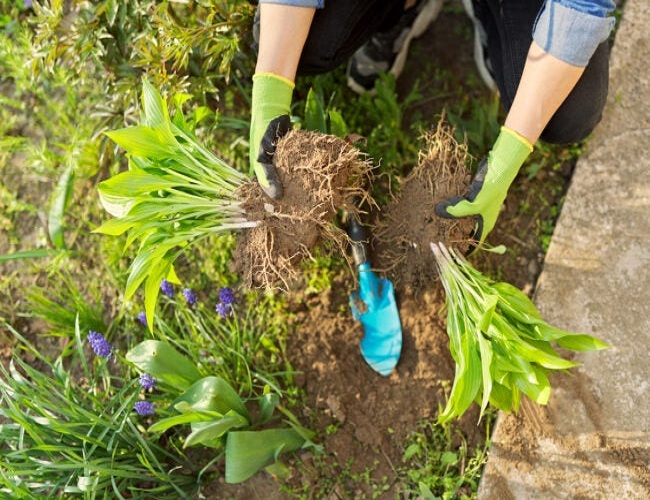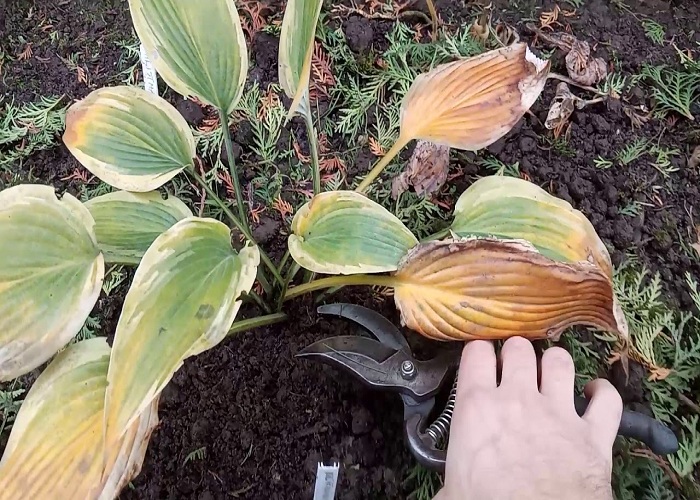If you put in a little effort this fall, you’ll be rewarded with much healthier hostas in your flowerbeds next spring. And that means hostas with bolder hues, expanded leaf sizes, and fuller flower clusters!
Hostas are among the most widely grown perennials. They provide major color and interest to flowerbeds, growing rapidly in the spring and blooming in the middle of summer.
How to take care of your Hostas in the Fall?
When & how to prune hostas
Herbaceous perennials are what we call hostas. Furthermore, their rhizomes (short tuberous roots) supply all the nutrients needed for leaf development. These roots are exceptionally sturdy and resilient.
If you’ve ever had the misfortune of having deer gnaw on your hostas during the growing season, you’ll know that the plant will always recover and continue to produce new leaves.
This is a crucial consideration for the rest of the summer and into the fall. When a plant has been ravaged by pests such as insects or animals, it is quite OK to remove it completely.
If there is still time for warm weather, it will cheerfully re-establish its foliage. Additionally, this will help your flowerbeds seem better as a result.

Cutting Back After A Frost
Your hostas may quickly wilt and die if a severe frost or freeze hits in the fall. It is now time to make the final pruning cuts before winter to get your plants ready for the cold season.
Even though the plants will survive the winter if left alone, the leaves should be raked up in the fall for the best results. Why? As a first step, the rotting vegetation can serve as a breeding ground for insects and a source of illness throughout the winter. Also, it’s not exactly aesthetically pleasing to just let the dead leaves pile up.
You can prune by cutting it down to within an inch or two of the ground using a sharp pair of garden or hedge shears. Add a layer of mulch on top to shield the plant’s roots from the harsh winter weather.
Fertilizing is something you definitely don’t want to do right now. If you fertilize your perennials in the fall, they will develop very slowly and delicately, which is not what you want. As a result, the plant may be severely damaged by frost during the winter.

Dividing & Transplanting
It’s also a good time to divide and replant oversized hostas, which can be done in the late summer or early fall. This will not only assist your hostas remain a manageable size for their environment, but it will also allow you to obtain additional plants at no cost to you.
Get the foliage cut down to within a few inches of the ground for the greatest results. Then, remove the root ball by excavating around its perimeter.
Don’t worry if you accidentally cut into some of the tuberous roots while you’re digging; they can recover from injury rather well. After the root ball has been dug up, it can be divided into smaller sections by cutting through the center with a shovel or a sharp garden knife.

Replanting New Divisions
The next year’s plants will be around the same size as the cuttings were. When started from a larger cutting, the young plant will develop into a larger specimen in its first year.
The final step is to replace the cuttings in their new home. The new hole should be dug to a depth of at least as much as the cutting was wide. Then, add the new section to a pot with equal parts compost and soil, and plant it so that the dirt is just above the crown of the roots.
Your new plants only need to be watered and mulched before they are ready to go in the spring. The roots need time to spread out and take hold, so planting them at least a few weeks before your first frost is ideal.
If the weather stays warm enough, the cuttings you transplanted may even produce new growth. Because of this, the first frost will cause only a natural dying back of the plant.


